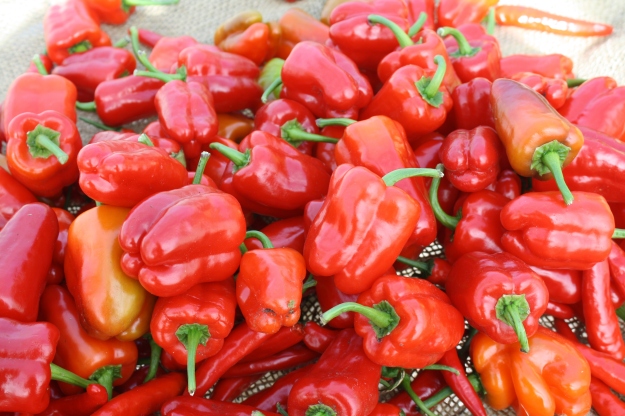Last night was the final “Tuesday Tour” for the 2012 season. Every Tuesday from May through September, I walk over to the Gazebo by the Outreach Center at 5 pm to offer a one hour garden tour for anyone who shows up. Sometimes it is as many as ten people. Other nights, one lucky person gets a personalized tour!
I always start with a quick history of the Garden — what I know of it, anyway. I know that the “Learning Landscape”, which became the Botanical Gardens, was created in the 1990s by URI Plant Science faculty and staff, RINLA members and their generous donations of time, money, and materials, Plant Science students, and URI Master Gardeners.
Reaching back in time, I know that the west side of the Outreach Center building was the headhouse of the original greenhouses on campus, built around 1905. The stone walls which enclose part of the main garden have a WPA plaque dated 1940. I have two aerial photos of the formal gardens from 1959 and 1966; you may have seen them on our website (cels.uri.edu/uribg ). Other than that, it has been hard to dig up any other history of the Garden, even with the help of the patient folks at the University Archives. I would love to hear from anyone with historic information about (or pictures of) the Garden!
So, with the history of the Garden briefly covered, the rest of the Garden tour highlights a few of my favorite things! I love to point out native plants, and talk about the connection between native plants and the health of our local ecosystem/food chain. Any colorful flower is OK in my book, as well as tall perennials that make great focal points, backdrops, or screens. Of course, ground covers are nice, helping to reduce the ever present chore of weeding. And so are foliage plants, which patiently beautify the gardens with none of the admiring looks that their flowering relatives get! Trees make me happy — deciduous trees which leaf out in celebration every spring, and evergreens that keep the landscape from becoming entirely black and white in the winter. Flowering shrubs, from early Witch Hazel to late Rose of Sharon, create spaces of color and fragrance to enjoy.
I’ve always enjoyed watching insects in the Garden. Honeybees are at the top of the list, being a former beekeeper, but also all sizes and shapes of wild bees. Butterflies never fail to delight, and moths as well. Dragonflies enjoy the Garden with it’s abundance of food for them and I love watching them bask in the sun like lizards.
Whether I like it or not, animals live in and visit the Garden. Rabbits and deer, moles, voles, and mice can be destructive, and many times I wish I had a way to keep them out of the Garden. That said, seeing them quietly walk through the grass, or hearing a beautiful bird song in the trees, makes me grateful for the little bit of wildlife I encounter here.
Really, all of the Garden is full of my favorite things.
















